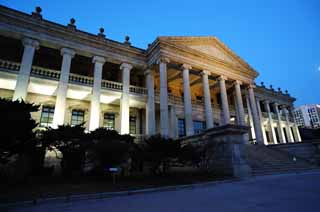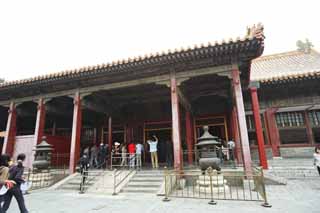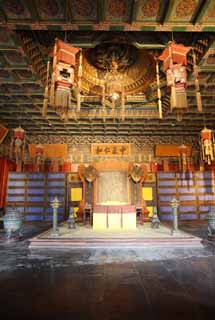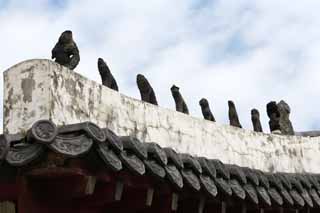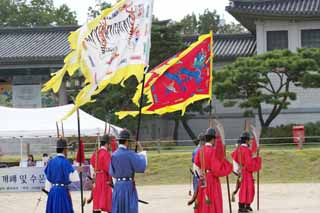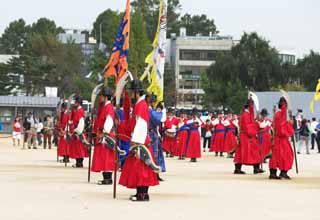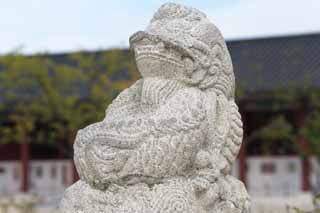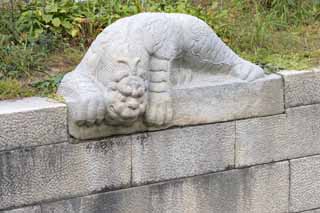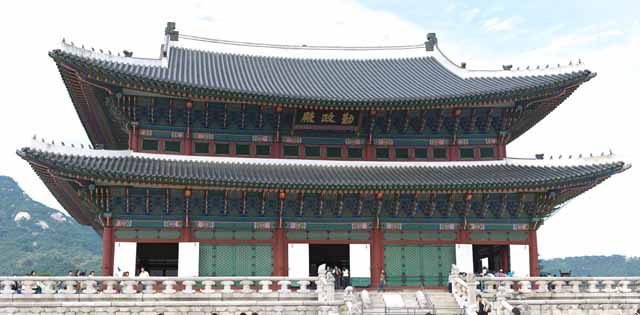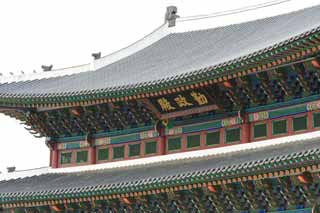Yun Free Stock Photos
keyword "a year" Part.1
Images can be modified and be used for commercial purposes without fee under the license.
Next keyword "military commander"
Click the thumbnail to look.
Keyword Search in this Site
You can search the image by entering the keyword in the following box.

Custom Search
No.9480 The Meiji-mura Village Museum Imperial Hotel center entrance
| It is the Imperial Hotel center entrance of Meiji-mura Village Museum. This building is designed in the 20th century by great master of the building world, American architect Frank Lloyd light, and it is the center entrance region of finished Imperial Hotel after 4-year large-scale construction (1923) in 1923. | |
| Camera: | Canon EOS-1Ds Mark III , Distagon 21mm F2,21 |
|---|---|
| Location: | Japan / Aichi Prefecture |
| Size: | 5616 x 3744Pixels |
No.9479 The Meiji-mura Village Museum Imperial Hotel center entrance
| It is the Imperial Hotel center entrance of Meiji-mura Village Museum. This building is designed in the 20th century by great master of the building world, American architect Frank Lloyd light, and it is the center entrance region of finished Imperial Hotel after 4-year large-scale construction (1923) in 1923. | |
| Camera: | Canon EOS-1Ds Mark III , Distagon 21mm F2,21 |
|---|---|
| Location: | Japan / Aichi Prefecture |
| Size: | 5616 x 3744Pixels |
No.9366 Meiji-mura Village Museum Rohan Kouda house [a snail hermitage]
| It is the Rohan Kouda house of Meiji-mura Village Museum [a snail hermitage]. Rohan calls one's house [house (snail hermitage) of the snail] and changes a house without several degrees. I spend this house which there was in the east of the Sumida River in one of those between about ten years from 1897 in the light Christian era. The nail-head-covering ornament which modelled a waterfowl is added to the room with deep eaves and leaves the remains of east of the Sumida River. | |
| Camera: | Canon EOS-1Ds Mark III , Distagon 21mm F2,23 |
|---|---|
| Location: | Japan / Aichi Prefecture |
| Size: | 5616 x 3744Pixels |
No.9365 Meiji-mura Village Museum Rohan Kouda house [a snail hermitage]
| It is the Rohan Kouda house of Meiji-mura Village Museum [a snail hermitage]. Rohan calls one's house [house (snail hermitage) of the snail] and changes a house without several degrees. I spend this house which there was in the east of the Sumida River in one of those between about ten years from 1897 in the light Christian era. The nail-head-covering ornament which modelled a waterfowl is added to the room with deep eaves and leaves the remains of east of the Sumida River. | |
| Camera: | Canon EOS-1Ds Mark III , Distagon 21mm F2,23 |
|---|---|
| Location: | Japan / Aichi Prefecture |
| Size: | 3744 x 5616Pixels |
No.9364 Meiji-mura Village Museum Rohan Kouda house [a snail hermitage]
| It is the Rohan Kouda house of Meiji-mura Village Museum [a snail hermitage]. Rohan calls one's house [house (snail hermitage) of the snail] and changes a house without several degrees. I spend this house which there was in the east of the Sumida River in one of those between about ten years from 1897 in the light Christian era. The nail-head-covering ornament which modelled a waterfowl is added to the room with deep eaves and leaves the remains of east of the Sumida River. | |
| Camera: | Canon EOS-1Ds Mark III , Distagon 21mm F2,23 |
|---|---|
| Location: | Japan / Aichi Prefecture |
| Size: | 5616 x 3744Pixels |
No.6769 Virtue Kotobuki shrine mason
| It is the mason of the virtue Kotobuki shrine. It is a West type (a renaissance style) building made of granites of 3 stories built in work room and an interview room for ten years from 1900 of the Emperor of high sect of the Korea empire very much. Originally it was an older brother of Seongjong, a mansion of Tsukiyama Masaru, but the virtue Kotobuki shrine has begun to be used as a temporary palace (an imperial villa) in the next year in Christian era 1400's by the position of the Bunroku Keicho era by Hideyoshi Toyotomi of Christian era 1592 because the royal palace was reduced to ashes. | |
| Camera: | Canon EOS-1Ds Mark III , Distagon 21mm F2,8 |
|---|---|
| Location: | Republic of Korea / Seoul |
| Size: | 5551 x 3668Pixels |
No.6300 Foster's hall of the palace
| It is Chinese world heritage, Foster's hall of the palace of the old palace. It was built in 1537 of Akiyo, and it was rebuilt by of Kiyo. It is the place that Empress Cixi did with . Remains of an ancient structure that the old palace was used as long Mamiya from 1421 to extinction of Qing. The world proud of East-West 753m, north and south 961m, total area 720,000 square meters, about 9,000 scales's greatest palace. | |
| World Heritage | Imperial Palaces of the Ming and Qing Dynasties in Beijing and Shenyang |
|---|---|
| Camera: | Canon EOS-1Ds Mark III , Distagon 21mm F2,8 |
| Location: | China / Beijing |
| Size: | 5616 x 3744Pixels |
No.6299 Foster's hall of the palace
| It is a Chinese world heritage, the inside of Foster's hall of the palace of the old palace. It was built in 1537 of Akiyo, and it was rebuilt by of Kiyo. It is the place that Empress Cixi did with . Remains of an ancient structure that the old palace was used as long Mamiya from 1421 to extinction of Qing. The world proud of East-West 753m, north and south 961m, total area 720,000 square meters, about 9,000 scales's greatest palace. | |
| World Heritage | Imperial Palaces of the Ming and Qing Dynasties in Beijing and Shenyang |
|---|---|
| Camera: | Canon EOS-1Ds Mark III , Distagon 21mm F2,8 |
| Location: | China / Beijing |
| Size: | 3705 x 5507Pixels |
No.4995 The sloppy image of the ancestral mausoleum of the Imperial Family
| A world heritage of Seoul, a sloppy image in the roof of the ancestral mausoleum of the Imperial Family (Jongmyo Shrine). With images such as three official storehouses Buddhist priest, Sun Wu-K'ung, wild boar eight commandments, ShaWujing, I show faith to Buddhism. Kyng-bokkung was used after completion in the original shrine of the Li-regimed Korea times for about 200 years in 1395. | |
| World Heritage | Jongmyo Shrine |
|---|---|
| Camera: | Canon EOS-1Ds Mark II , EF 135mm F2L |
| Location: | Republic of Korea / Seoul |
| Size: | 4992 x 3328Pixels |
No.4948 The traditional royal guards
| It is the alternating function of a sentry performed in world heritage of Seoul, Kyng-bokkung. The sentry who wore folk costume marches with a musical instrument and a weapon and the flag in a hand. Kyng-bokkungwas used after completion in the original shrine of the Li-regimed Korea times for about 200 years in 1395. | |
| Camera: | Canon EOS-1Ds Mark II , EF 135mm F2L |
|---|---|
| Location: | Republic of Korea / Seoul |
| Size: | 4992 x 3328Pixels |
No.4947 The traditional royal guards
| It is the alternating function of a sentry performed in world heritage of Seoul, Kyng-bokkung. The sentry who wore folk costume marches with a musical instrument and a weapon and the flag in a hand. Kyng-bokkungwas used after completion in the original shrine of the Li-regimed Korea times for about 200 years in 1395. | |
| Camera: | Canon EOS-1Ds Mark II , EF 135mm F2L |
|---|---|
| Location: | Republic of Korea / Seoul |
| Size: | 4488 x 3092Pixels |
No.4946 HAITAI
| It is a stone statue standing on a world heritage of Seoul, a bridge built over the taboo river (Gungchon) flowing through Kyng-bokkung, the railing of the Yeongjegyo. It is HAITAI of the animal in the imagination that can distinguish the right and wrong with a thing such as the Japanese top dog. Kyng-bokkungwas used after completion in the original shrine of the Li-regimed Korea times for about 200 years in 1395. | |
| Camera: | Canon EOS-1Ds Mark II , EF 135mm F2L |
|---|---|
| Location: | Republic of Korea / Seoul |
| Size: | 4992 x 3328Pixels |
No.4945 A stone statue of Kyng-bokkung
| It is a stone statue beside the taboo river (Gungchon) flowing through a world heritage of Seoul, Kyng-bokkung. Kyng-bokkungwas used after completion in the original shrine of the Li-regimed Korea times for about 200 years in 1395. | |
| Camera: | Canon EOS-1Ds Mark II , EF 135mm F2L |
|---|---|
| Location: | Republic of Korea / Seoul |
| Size: | 4992 x 3328Pixels |
No.4944 Kunjongjon of Kyng-bokkung
| World heritage of Seoul, Tadashi of Kyng-bokkung, Kunjongjon. Kyng-bokkungwas used after completion in the original shrine of the Li-regimed Korea times for about 200 years in 1395. It is 13,811 pixels in width, about 100 million pixels of super high-resolution photographs of 6,840 pixels in height. | |
| Camera: | Canon EOS-1Ds Mark II , EF 135mm F2L |
|---|---|
| Location: | Republic of Korea / Seoul |
| Size: | 13881 x 6840Pixels |
No.4943 Kunjongjon of Kyng-bokkung
| World heritage of Seoul, Tadashi of Kyng-bokkung, Kunjongjon. Kyng-bokkungwas used after completion in the original shrine of the Li-regimed Korea times for about 200 years in 1395. | |
| Camera: | Canon EOS-1Ds Mark II , EF 135mm F2L |
|---|---|
| Location: | Republic of Korea / Seoul |
| Size: | 4992 x 3328Pixels |
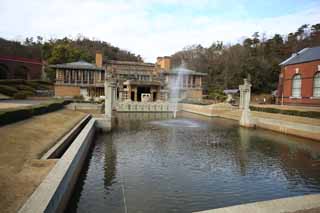
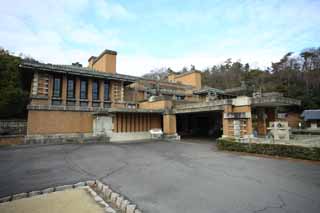
![photo,material,free,landscape,picture,stock photo,Creative Commons,Meiji-mura Village Museum Rohan Kouda house [a snail hermitage], tokonoma, tatami mat, hanging scroll, Cultural heritage](../sumb/yun_9366.jpg)
![photo,material,free,landscape,picture,stock photo,Creative Commons,Meiji-mura Village Museum Rohan Kouda house [a snail hermitage], The entrance, round window, In the days of the deep red dew, Cultural heritage](../sumb/yun_9365.jpg)
![photo,material,free,landscape,picture,stock photo,Creative Commons,Meiji-mura Village Museum Rohan Kouda house [a snail hermitage], building of the Meiji, The Westernization, In the days of the deep red dew, Cultural heritage](../sumb/yun_9364.jpg)
